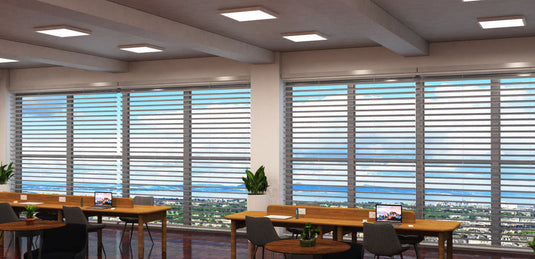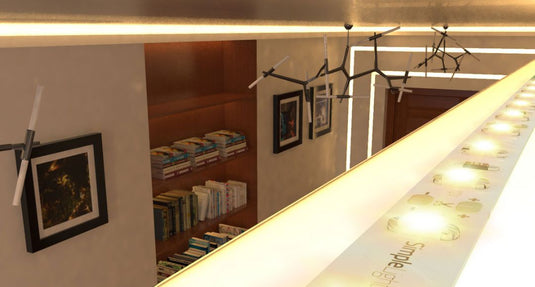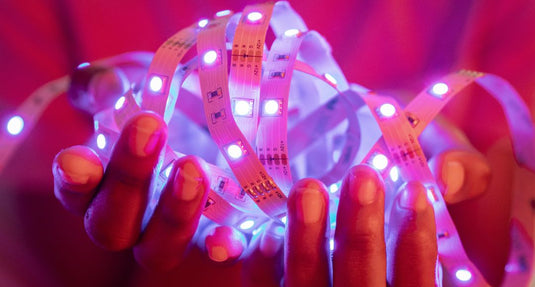Try grabbing something in your home and look at it under your desk lamp or any lighting source. Now, go outside and look at the same object under the sun. Do you notice anything different? Usually, things tend to look different based on the lighting you view them in. Natural light gives us a better vision, while artificial lighting may disrupt the actual image of the object.
This is the reason why you sometimes think that you have the same pair of socks on before you leave for work only to find out that they don’t quite match when you're on the bus! So, how do you deal with this? Do you have to constantly check your things outside to get a good look? Of course not! There's a way to correctly see things without checking everything under natural lighting.
What do you typically check on the labels when buying your light bulbs? Brightness, lumens output, colour temperature, warranty, and life expectancy are the priority of many. However, aside from those, there's another characteristic that you should consider: the light bulb's CRI!
What does CRI mean?
CRI stands for colour rendering index. It measures and compares (scale of 0-100) the capacity of a light source to correctly reproduce the colour of an object under artificial lighting. If you're looking for an LED that can perfectly copy the sun, it needs to have a CRI of 100. With a bulb in this CRI, the object will appear naturally and clearly with colours that look truer across a broad spectrum.
You’ll be surprised to find out that despite their terrible energy consumption that halogens and incandescent bulbs have a CRI of 100. They have an excellent and natural light spectrum! Well, if you can have that CRI rating in a more energy-efficient LED bulb, then you don't need to trade anything off!
When it comes to understanding the CRI value, you don't need to rack your brain cells since it's pretty simple. The higher the CRI value, the more vibrant the colours will look. The lower the CRI value, the duller and more different the colours will appear.
If you're having a hard time determining how high is good and how low is terrible, then stick with a bulb with a CRI of 80. It's considered suitable for most applications, and you can use it anywhere in your home. Bulbs with a CRI of 90 are already excellent, so if you happen to come across one, then don't hesitate and purchase it! Try to never go with less than a CRI of 80 because the colours will be harder to differentiate and will appear washed out.
In addition, CRI is different from colour temperature, so don't be confused. Colour temperature is measured on a scale of 1,000 to 10,000 degrees Kelvin (K).
Is CRI important for your home lighting?
Short answer, yes, CRI plays an important role! At home, you want colours to be crisp and vibrant and everything to be sharp so you can arrange your decor properly and layout your interior in perfect harmony. If you're having difficulty distinguishing between red and purple when night time draws in, you shouldn't be surprised that your aesthetics will look like a mess!
Aside from that, a high CRI is also important for other tasks like reading a book, watching TV, and preparing meals. This way, your eyes will not have a hard time perceiving things, and it can comfortably perform the tasks that it needs to do.
What industries is CRI crucial?
When it comes to most domestic properties and commercial establishments, a CRI score of 80 and above is okay. You'll already be comfortable with that value, and you won't have any problems differentiating things. On the other hand, if you’re in an industry that's particular with colour and visuals, getting a CRI of 90 and above is recommended.
Industries and organisations that need a CRI of 90 for professional reasons include printing shops, dental clinics, hospitals, paint shops, and textile factories. Other places that require this CRI for improved aesthetics include top-class hotels, grocery and retails stores, photography studios, art galleries, and showrooms.

It’s important to note that although some places and sectors need a high CRI rate, other spaces do not. This includes places like warehouse facilities, parking lots, and other areas where you don't need to see colours in particular.
Is CRI necessary?
Aside from differentiating green from blue, CRI has convinced many of its importance. One apparent reason is the increase in safety and improved visibility. If you can see things clearly, it's unlikely that you will miss a step or trip on wires. Also, you'll be able to catch warning signs easily and not fall for any risks or dangers. With the improvement of CRI in home lighting, more accidents, issues, and mistakes can be prevented.
Other than safety, CRI can also increase productivity. Employees become more productive in a workplace with a high CRI lighting count because of the favourable work environment. Remember, lighting does wonders to the mood of people!

Now that you know the importance of CRI to your light bulbs, it's time to include them in the specifications that you check. If you're looking for high-quality LED lights that are guaranteed to brighten up your homes, then check out our website, LED Supplier! We have a massive product line that includes bulbs, downlights, LED strip lights, panel lights, under-cabinet lights, and more.




